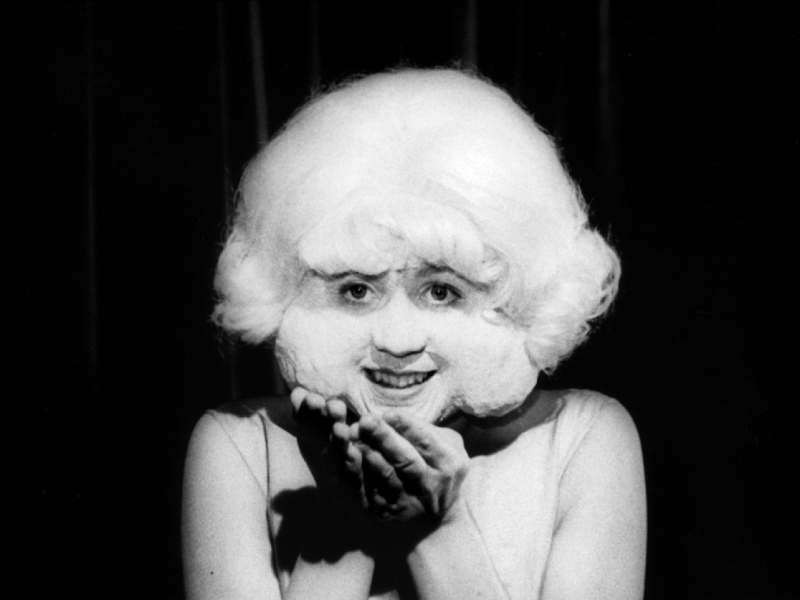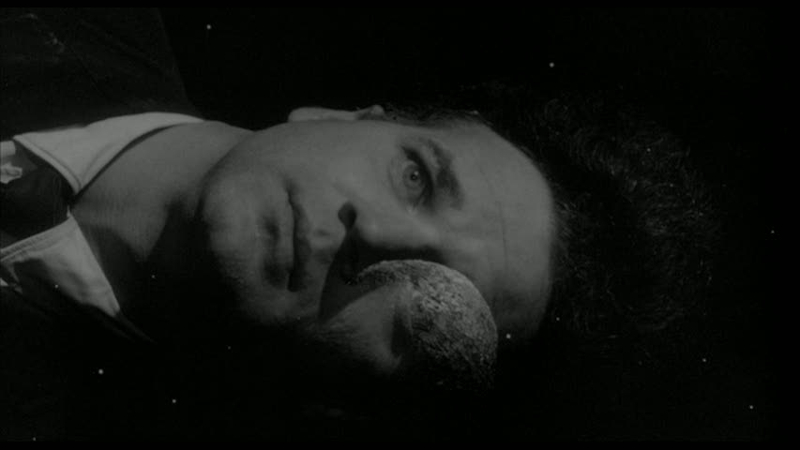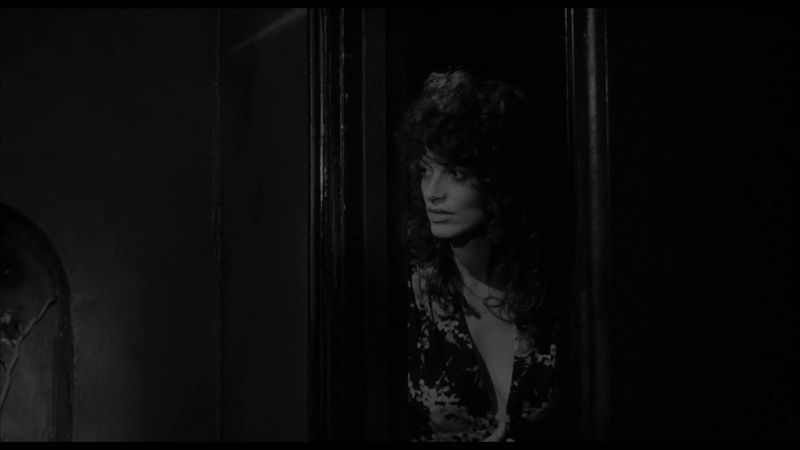Director – David Lynch – 1977 – US – Cert. 15 – 89 mins
*****
A look at where Eraserhead came from – and where its weirdness led. First published in 1996.
The current vogue for Special Editions and Director’s Cuts prompts David Lynch to rerelease Eraserhead with a Dolby Stereo sound remix.

The pre-existing gem of a soundtrack was textured by Lynch and collaborating sound designer Alan Splet to incorporate a host of industrial noises alongside such unforgettable effects as the hero’s girlfriend’s mother gargling during a dinner table fit. Eraserhead remains arguably the most original and innovative vision the last twenty years of American cinema have produced.

Not that film or director came from the mainstream. Abandoning painting as an art student, Lynch began making animation / live action films with the brief loop Six Men Getting Sick (1967) with the four minute The Alphabet (1969) and the half hour The Grandmother (1970) funded by American Film Institute grants. The AFI then funded Eraserhead, which mushroomed to feature length and required completion finance from elsewhere. Reactions to the result vary between boredom, revulsion, or admiration (this writer aligns with the latter).

Invited to his girlfriend Mary’s (Charlotte Stewart) for dinner, “Printer – on vacation” Henry (Lynch regular Jack Nance) learns she is pregnant. Later married, he / they (she keeps inexplicably leaving home and returning) look after their unearthly baby in his seedy flat. Here, he fantasises about the lady in the radiator (Laurel Near) and meets a mysterious, attractive woman from across the hall (Judith Roberts). Eventually, Henry destroys baby and is united with radiator lady in heaven.

This perfunctory synopsis barely hints at the demented nature of the proceedings: the soundtrack, the slow pace, Henry’s confused persona, the occasional humour (the embarrassed confrontation between Henry and prospective in-laws, complete with bleeding, man-made chickens), the musical numbers, the bursts of static (for years, Lynch has been trying to make pet project Ronnie Rocket, a film he describes as about “electricity”).

The mysterious, attractive lady prefigures Isabella Rossellini’s nightclub singer in Blue Velvet (1986), Mary’s house looks like something out of The Wizard of Oz (1940 – “It ain’t exactly Emerald City”, says a character of small town Big Tuna in Wild at Heart, 1990, suggesting a peculiarly Lynchian obsession with that Hollywood classic) while the White and Black Lodges in TV soap Twin Peaks (two seasons, 1989-91) are anticipated by both trees growing out of mud piles (recalling child excrement in The Grandmother) and the chevron-patterned floor outside the lift in Henry’s apartment building.

Despite his following the critical success of The Elephant Man (1980) with the botched megabuck SF blockbuster Dune (1984), the mainstream finally embraced Lynch upon the recent colossal success of his TV soap Twin Peaks. However, a movie prequel Twin Peaks Fire Walk With Me (1992) flopped, demonstrating that America and Lynch still haven’t quite come to terms. Yet popular acceptance wasn’t a consideration in the four, impoverished years Eraserhead took Lynch; it remains to date his most personal work, and a film to be cherished.
Originally published in What’s On in London in 1996 or thereabouts, when the newly remastered Eraserhead played what was then the MGM Piccadilly.
Trailer:
